The liquefied natural gas market is estimated to be valued at USD 155.41 Bn in 2025 and is expected to reach USD 289.79 Bn by 2032, growing at a compound annual growth rate (CAGR) of 9.3% from 2025 to 2032.
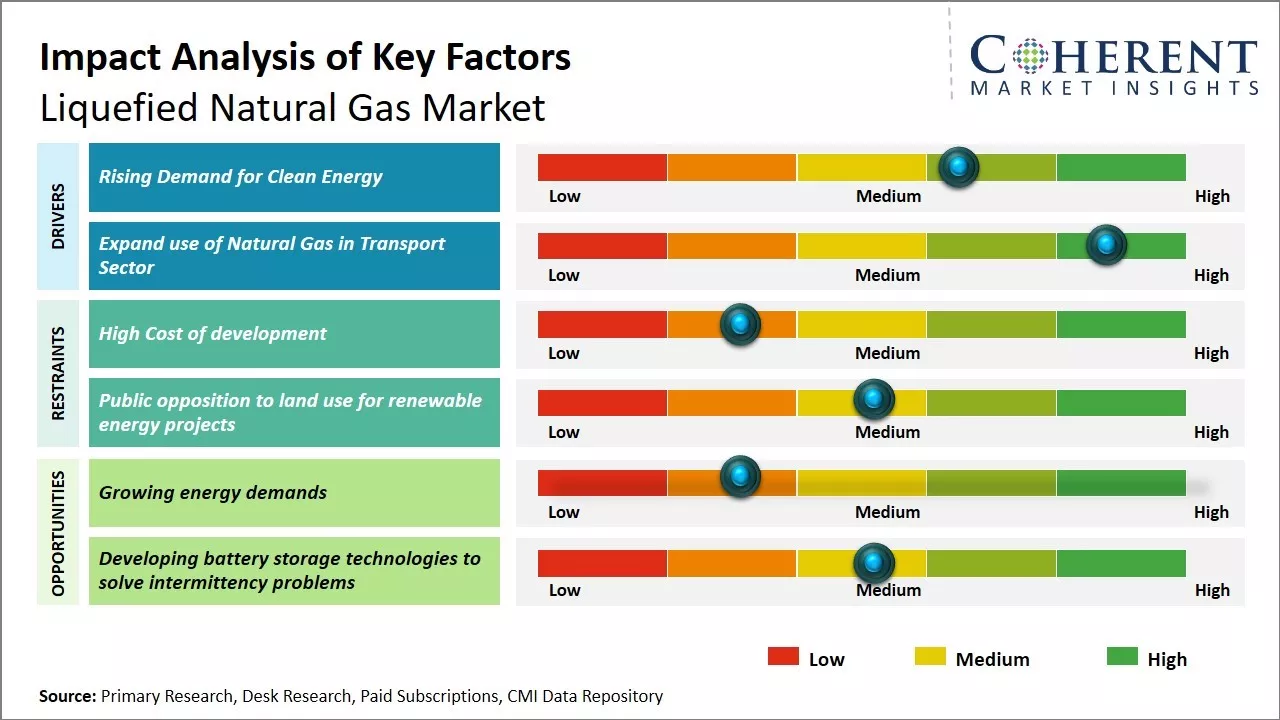
Discover market dynamics shaping the industry: Request sample copy
The liquefied natural gas market is witnessing positive trends over the past few years. There has been substantial investment in the LNG infrastructure like pipelines, shipping, and receiving terminals to facilitate the increasing import and export of LNG across regions. Many countries are switching to natural gas and LNG to reduce carbon emissions, improve energy security by diversifying supply sources, and meet growing long-term energy demand. Several nations have announced goals to expand their LNG terminals and import capacities to capitalize on affordable and relatively cleaner LNG. The market is also getting conducive government policies and initiatives focusing on developing domestic gas distribution networks. These factors have been driving the liquefied natural gas market growth.
Rising Demand for Clean Energy
Liquefied Natural Gas or LNG being a cleaner alternative to coal and oil has led to a surge in demand globally. Many large energy importing countries have been switching to natural gas to fuel their power plants and other industrial needs as it emits significantly less CO2 and other pollutants compared to other fossil fuels. Countries like China, India and several nations in Southeast Asia have been on the forefront to replace aging coal fired plants with gas based generation to curb air pollution in their major cities. The floating and land based LNG receiving terminals built by countries like Japan, South Korea provide easy access to imported gas. Transition to gas based economy helps nations to comply with their climate commitments under Paris agreement. Many gas exporters too have been successful in promoting LNG as a bridging fuel in transition to renewables. Long term gas sale agreements are signed to ensure supply security and price stability. Investments are made in liquefaction facilities, pipelines and carriers to help monetize newly discovered gas reserves and expand market share. As coal is gradually phased out, role of natural gas becomes more important especially in countries which lack domestic oil and gas reserves. The rising preference for LNG as a preferred fuel supports steady growth in global liquefaction capacity and trade volumes in the coming years. Growing consumption of clean energy is expected to drive the market growth. For instance, according to data by the Center for Climate and Energy Solution, in 2023, about 11.2 percent of the energy was consumed globally for heating, power, and transportation.
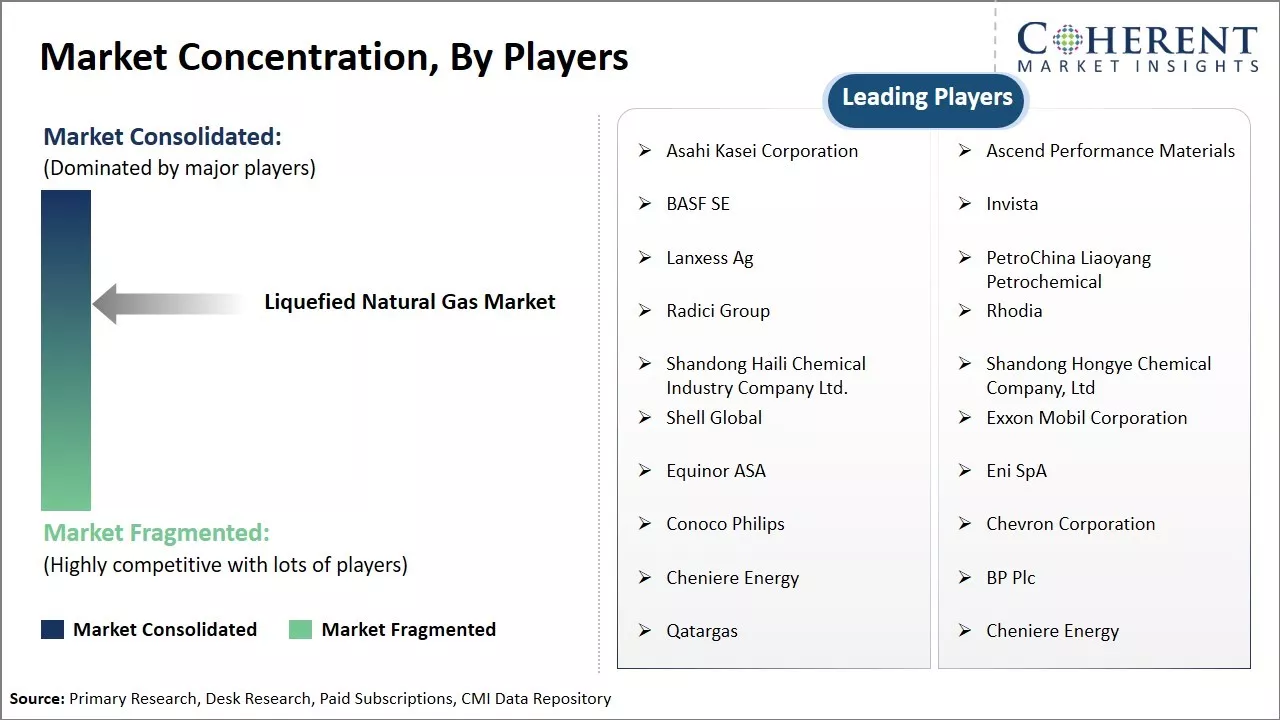
Get actionable strategies to beat competition: Request sample copy
Expand the Use of Natural Gas in the Transport SectorAnother key driver for the LNG market expansion is the increasing focus on the usage of natural gas as a transport fuel. Both compressed natural gas (CNG) as well as liquefied natural gas (LNG) are disrupting the traditional diesel and gasoline markets. Commercial vehicles especially heavy duty trucks and buses are rapidly shifting to CNG/LNG mainly in countries where gas grid is already developed. Adoption accelerated due to significant economic benefits from lower fuel costs and clean mobility. Countries like Pakistan, Iran, Argentina, Brazil and India now have sizeable CNG vehicles on road. For long haul trucks and marine vessels, LNG provides distinct advantages over conventional fuels due to its higher energy density and storage at ambient temperatures compared to compressed gas. Leading marines companies are investing in LNG fueled ships and bunkering facilities to reduce emissions. Major global truck manufacturers too launched dedicated models which can run on LNG. The US interstate trucks are shifting to LNG in big numbers to meet tightening emissions regulations.
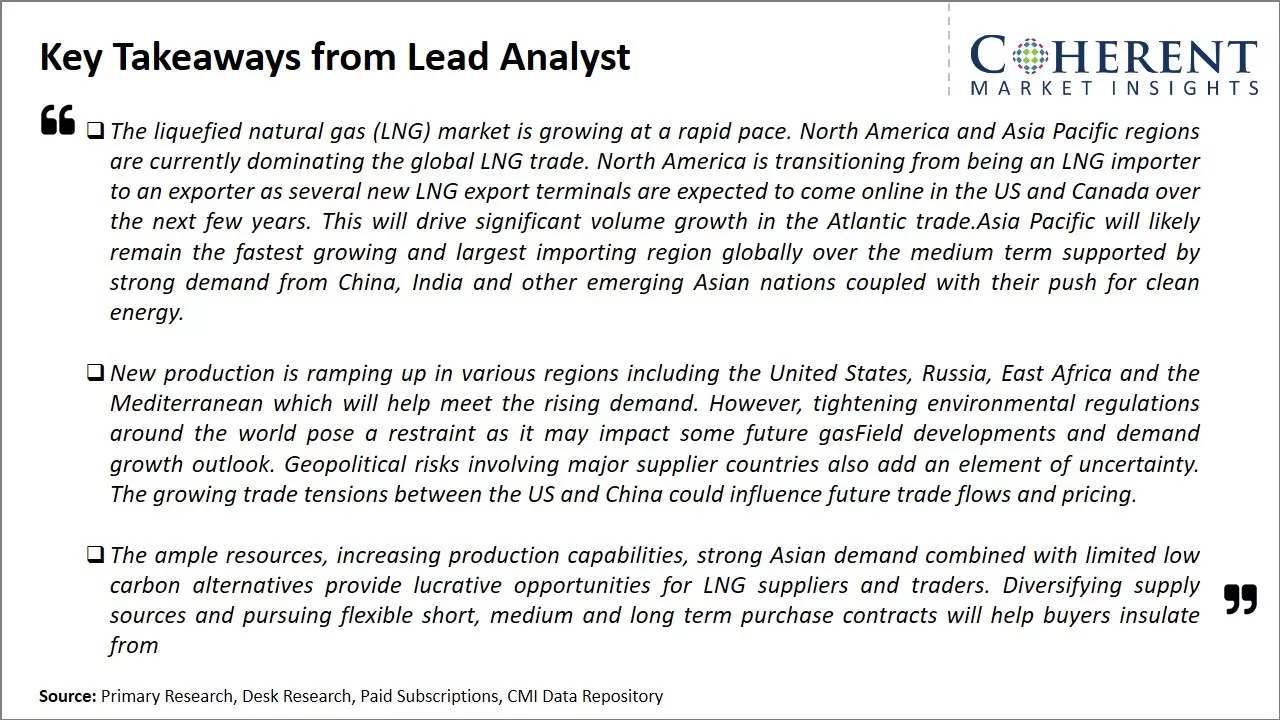
To learn more about this report, Request sample copy
Market Challenges: High cost of developmentThe LNG market faces several challenges. The infrastructure required to transport and regasify LNG is expensive to develop which hampers growth of new importing regions. Volatility in prices makes long term contracts difficult for consumers. Geopolitical tensions can disrupt supply if exporting and importing nations are involved in conflicts. Environmental concerns around fugitive methane emissions during production and transportation are mounting.
Market Opportunities: Growing energy demands
Growing energy demands particularly in Asia are driving the need for more imports of natural gas. Several new LNG producing projects are in the works to exploit newly accessible reserves to meet this rising demand. As infrastructure expands to new markets, economies of scale will help lower transportation costs and promote further growth. The flexibility of LNG allows it to facilitate switching between different energy sources to complement renewable additions.
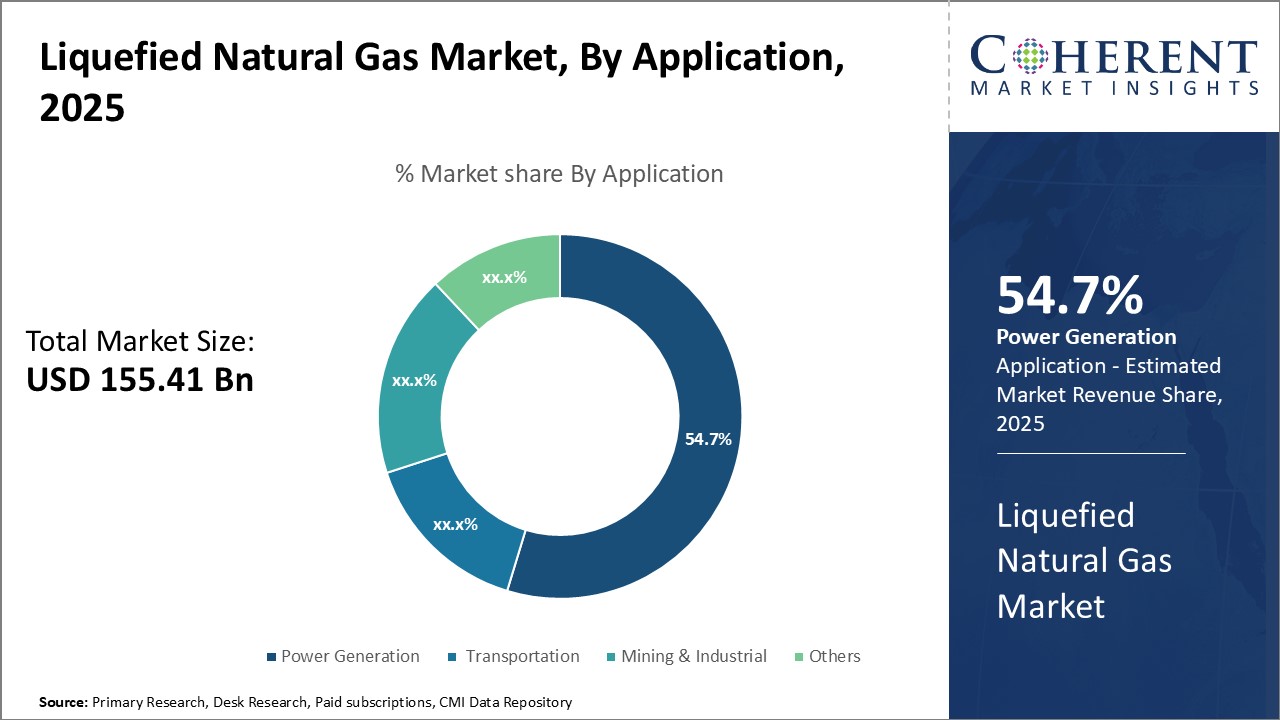
Discover high revenue pocket segments and roadmap to it: Request sample copy
Insights, By Application: In terms of application, power generation contributes the highest share of the market owing to the ongoing demand growthThe power generation segment currently accounts for the 54.7% share of the global liquefied natural gas (LNG) market. There has been a steady rise in the demand for natural gas-fired power plants worldwide over the past decade, driven primarily by favorably low prices and environmental policies supportive of cleaner fuels. Many countries and provinces have announced plans to reduce their reliance on coal and increase the utilization of natural gas for electricity generation. Natural gas produces around half the carbon emissions of coal when burned, making it an attractive transitional fuel as the world moves towards renewables and low-carbon energy sources. Several Asian nations have introduced time-bound targets to scale up gas-fired capacities in their national emission reduction frameworks. Infrastructure investments are also being made to develop domestic natural gas transmission and distribution networks to supply power utilities. On the supply side, the significant increase in LNG export capacities from new and expanded projects in regions such as Australia, the U.S., and Russia have helped bridge the global demand-supply gap. This has kept Asian LNG spot prices relatively stable despite rising consumption, making gas-to-power generation economically more viable compared to coal. Power producers have taken advantage of favorable long-term LNG contracts with tolling arrangements to secure feedstock while hedging risks. Going forward, the pursuit of energy security and diversification strategies by major consumers is likely to ensure the power segment remains the primary driver of LNG demand internationally. While renewable energy integration progresses, gas will continue playing a key transitional role by supplementing intermittent renewable power and offsetting intermittent coal plant retirements in the coming decades.
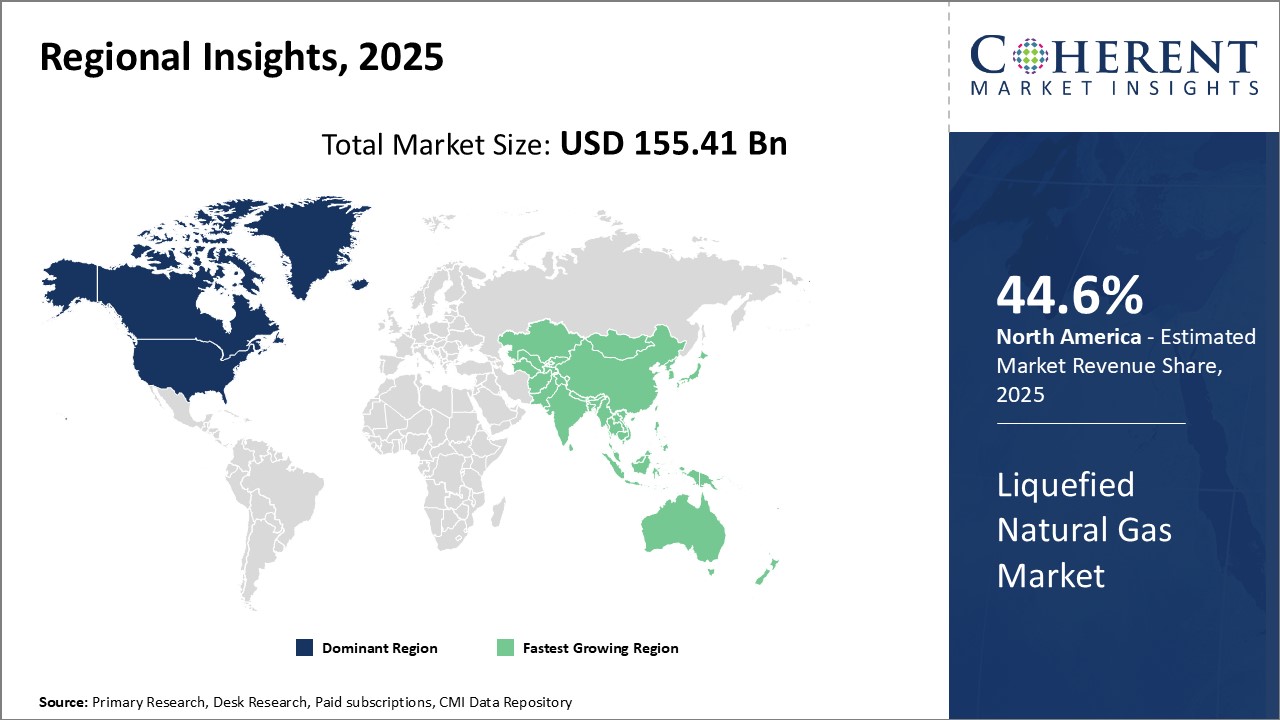
Need a Different Region or Segment? Customize now
North America has been the dominant region in the global Liquefied Natural Gas (LNG) market with 44.6% and is expected to retain its position over the coming years. With vast natural gas reserves and an advanced LNG infrastructure, the U.S. spearheads the North American LNG industry. Major refineries along the Gulf Coast along with strategic deep-water ports provide the region direct access to both the domestic and international markets. This has enabled the North American region to establish its strong foothold by facilitating sizeable LNG imports as well as exports over the years. Besides established demand, the presence of top LNG players has also been a major factor supporting regional dominance. Multiple long-term supply deals between major American producers and Asian consumers demonstrate the strong industry presence. Furthermore, the emerging shale gas revolution has enhanced regional competitiveness. Abundant unconventional reserves have not only strengthened the regional energy security but also unlocked vast opportunities for exports. As global demand grows, North America is well-positioned to leverage both infrastructure and resources to solidify its leadership position in the global LNG space.
The Asia Pacific region has emerged as the fastest growing market globally. Several factors have contributed to the region's rise. Over the last decade, Asian countries have increased their natural gas consumption considerably, driven by strong economic growth and environmental regulations encouraging the fuel switch from coal to natural gas. Major LNG importers like China, Japan, and South Korea have been the key drivers while emerging markets like India are also contributing to the demand uptick.
Liquefied Natural Gas Market Report Coverage
| Report Coverage | Details | ||
|---|---|---|---|
| Base Year: | 2024 | Market Size in 2025: | USD 155.41 Bn |
| Historical Data for: | 2020 To 2024 | Forecast Period: | 2025 To 2032 |
| Forecast Period 2025 to 2032 CAGR: | 9.3% | 2032 Value Projection: | USD 289.79 Bn |
| Geographies covered: |
|
||
| Segments covered: |
|
||
| Companies covered: |
Asahi Kasei Corporation, Ascend Performance Materials, BASF SE, Invista, Lanxess Ag, PetroChina Liaoyang Petrochemical, Radici Group, Rhodia, Shandong Haili Chemical Industry Company Ltd., Shandong Hongye Chemical Company, Ltd, Shell Global, Exxon Mobil Corporation, Equinor ASA, Eni SpA, Conoco Philips, Chevron Corporation, Cheniere Energy, BP Plc, Qatargas, and Cheniere Energy |
||
| Growth Drivers: |
|
||
| Restraints & Challenges: |
|
||
Uncover macros and micros vetted on 75+ parameters: Get instant access to report
*Definition: The liquefied natural gas market involves the production, processing, transportation, and regasification of natural gas into the liquid form. It includes companies that produce LNG through the liquefaction of natural gas and shipping of LNG between exporting and importing countries via specially built LNG tankers. Major players extract natural gas from fields, purify it by removing impurities such as water, dust, and extra components, cool it to liquefy it, store in cryogenic tanks, and transport over sea.
Share
Share
About Author
Yash Doshi is a Senior Management Consultant. He has 12+ years of experience in conducting research and handling consulting projects across verticals in APAC, EMEA, and the Americas.
He brings strong acumen in helping chemical companies navigate complex challenges and identify growth opportunities. He has deep expertise across the chemicals value chain, including commodity, specialty and fine chemicals, plastics and polymers, and petrochemicals. Yash is a sought-after speaker at industry conferences and contributes to various publications on topics related commodity, specialty and fine chemicals, plastics and polymers, and petrochemicals.
Missing comfort of reading report in your local language? Find your preferred language :
Transform your Strategy with Exclusive Trending Reports :
Frequently Asked Questions
Joining thousands of companies around the world committed to making the Excellent Business Solutions.
View All Our Clients
US Reciprocal Tax Impact Analysis On Liquefied Natural Gas Market
Stay updated on tariff changes with expert insights and timely information